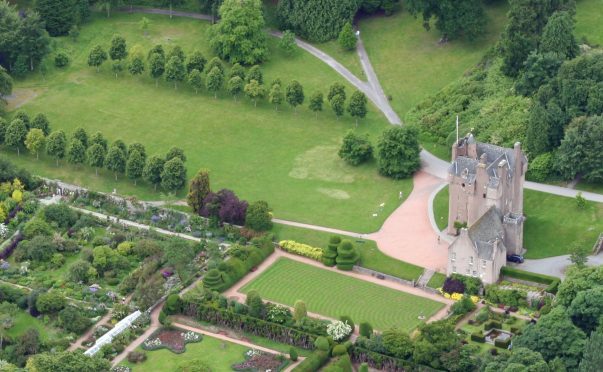Aberdeenshire is home to more than 300 castles and stately homes, so it’s little wonder that it has an international reputation as “Scotland’s Castle Country”. It is fitting, therefore, that Aberdeenshire is where you will find Scotland’s only designated Castle Trail.
Many of these castles and stately homes continue to be occupied as private residences, but throughout the north-east many more are regularly open to visitors. Whether you’ve lived in the area your whole life or are visiting for the weekend, a trip to one of Aberdeenshire’s castles is a must.
Although some properties are only open seasonally, others – such as the ruined castles of Findlater, Dunnideer, and Knock – can be visited year round, giving you ample opportunity to travel back in time and put yourself in the shoes of the laird and lady of the castle, re-enact your own scenes of courtly romance and chivalric knights battling, and imagine the spectacular mediaeval banquets once commonplace in these majestic buildings.
Across Aberdeenshire you can witness first-hand the historical development of the castle as a structure – the earliest origins of the castle is the motte and bailey, built in the 11th and 12th centuries. Many of the first castles were erected by families of Norman and Flemish descent who had arrived in Britain in support of William the Conqueror and who were granted lands as reward. The earthen motte, or mound, would have been crowned by a timber castle, with additional timber buildings in the surrounding flat area, the “bailey”.
Being a purpose-built mound to support a timber structure, mottes were not designed to support the much heavier stone-built castles which were to replace them. Often the motte was levelled to create a strong foundation for the great stone towers, obliterating all trace of the early timber buildings. At Huntly, however, the 12th-century motte, also known as the Peel of Strathbogie, still sits proudly to the west of the majestic 16th-century stone-built castle, home to the Gordon Earls of Huntly, which itself occupies the site of the former bailey.
In the late mediaeval period, the fortified stone-built tower house became the common castle design, as typified by Crathes Castle. Built in the 16th century by the Burnett of Leys family, on landed granted by Robert the Bruce, Crathes Castle boasts a variety of turrets, towers and defensive features, while some of the rooms retain their original ornately-painted ceilings.
Once the family stronghold no longer needed to be a purely defensive structure, the traditional fortified castle was replaced in the 17th and 18th centuries by palatial mansions. These stately homes were often designed by the leading architects of the day, and their grand scale and elaborate designs served to demonstrate the wealth, sophistication and importance of the families who occupied them. Designed in the Palladian style by renowned Scottish architect William Smith in the 18th century, Haddo House was home to the Gordon family, Earls and Marquesses of Aberdeen, and is a fine example of its type.
Of course, many of the castles of Aberdeenshire may already be familiar to you from the films and literature which have been inspired by them. The ruins of Slains Castle, for example, are said to have been Bram Stoker’s inspiration for Dracula’s castle in the novel of the same name. Disney is said to have based its company’s motif on Craigievar Castle, while more recently they used Dunnottar Castle as inspiration for the home of the lead character in the animated film Brave. With such a spectacular location, jutting out into the North Sea, it should come as no surprise that this was not the first time that Dunnottar Castle had appeared on the big screen – the 1990 Hollywood blockbuster Hamlet was filmed in part at Dunnottar, while in 2014 it was the backdrop for the film Victor Frankenstein.
With a wealth of historical fact and fantasy on your doorstep, why not seek out your own inspiration and visit one of Aberdeenshire’s castles today?
FACTBOX
The Castle Trail is available from tourist outlets, or online via the Aberdeenshire Council and VisitScotland websites:
www.aberdeenshire.gov.uk/leisure-sport-and-culture/tourists-and-visitors/castles-and-country-homes
www.visitscotland.com/see-do/itineraries/castles/scotlands-castle-trail
More information about the archaeological and historical sites in the region can be found on the Aberdeenshire Council Archaeology Service’s website:
www.aberdeenshire.gov.uk/leisure-sport-and-culture/archaeology
